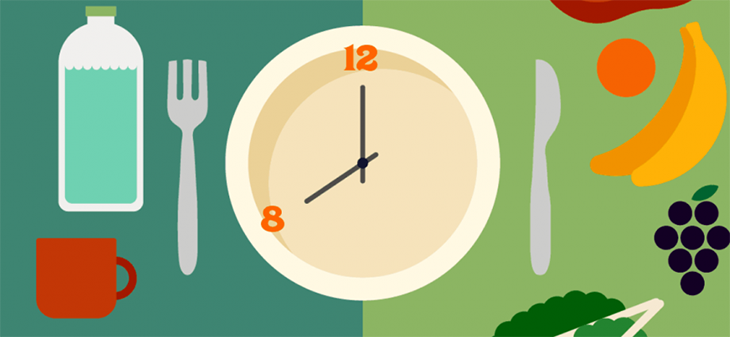1 Diet for Weight Loss: Paleo
Definition
The Paleo diet, also known as the prehistoric diet, emerged in the 1970s and is gaining popularity as an effective way to lose weight. This diet focuses on low carbohydrate content, which aids in weight loss.
The Paleo diet is inspired by the cave life of humans in the Stone Age, where they consumed foods like meat, seafood, vegetables, fruits from trees, etc.
The Paleo diet emphasizes lean proteins, vegetables, fruits, and nuts, while discouraging processed foods, sugar, dairy, and grains. Some variations of the diet may include additional items like cheese, butter, potatoes, or sweet potatoes.

Effectiveness and Limitations
Studies have shown that the Paleo diet helps in weight loss and reducing waist circumference. Specifically, this diet helps you consume 300-900 calories less and more protein per day.
However, a limitation to note is that by eliminating whole grains, grains, and dairy products, the diet may lead to a lack of important nutrients.
Additional Benefits
In addition, this diet is also considered effective in reducing risk factors associated with cardiovascular diseases such as cholesterol, blood sugar, or high blood pressure.
2 Vegan Diet for Weight Loss
Definition
The Vegan diet for weight loss involves eating purely plant-based foods and eliminating all animal-derived products. Instead, you will consume fruits, vegetables, grains, legumes, and nuts.

Effectiveness and Limitations
The vegan diet has the benefit of effective weight loss and maintaining weight and body mass index (BMI) more stable than other diets.
In addition to the above effects, the Vegan diet for weight loss also has the limitation of completely eliminating animal meat from the diet, which may result in a lack of essential nutrients.
Additional Benefits
In addition, this diet is based on plant-based components and avoids eating processed meats, which reduces the risk of developing heart disease, type 2 diabetes, and reduces the risk of Alzheimer’s and cancer.
3 Low-Carb Diet for Weight Loss
Definition
Low carb is a diet that involves a specific process, starting with consuming simple carbs and refined sugar, then transitioning to complex carbs, and finally to a low-carb phase.

Effectiveness and Limitations
A low-carb diet ensures that you feel full at each meal while still achieving the desired weight loss.
However, not everyone can implement a low-carb diet. Some people who follow this diet may experience increased bad LDL cholesterol levels, which is not good for health. Therefore, it’s important to consider and consult a doctor before starting this diet.
Additional Benefits
Many studies have shown that a low-carb diet reduces the amount of stored fat around the organs, especially for overweight and obese people. At the same time, a low-carb diet can help reduce cholesterol levels, blood sugar, insulin, and blood pressure.
4 Dukan Diet for Weight Loss
Definition
The Dukan diet, developed by French expert Pierre Dukan, is a weight loss method that involves consuming a lot of protein from foods like eggs, lean meat, chicken, turkey, cheese, fish, yogurt, and cream, while limiting carbs and fats in the body.
The Dukan diet has 4 phases, 2 of which are designed for weight loss while the remaining 2 phases help maintain the ideal weight without the risk of uncontrolled weight gain.

Effectiveness and Limitations
The Dukan diet has the benefit of weight loss by accelerating metabolism rate, reducing the level of hunger hormone ghrelin, and increasing satiety hormones.
A note to mention is that rapid weight loss with the Dukan diet by strictly limiting caloric intake can lead to a significant loss of muscle. When muscle mass and calorie intake decrease, the body conserves energy, making it easy to regain weight after weight loss.
5 Atkins Diet for Weight Loss
Definition
The Atkins diet is a long-term diet based on the mechanism of action of the Low Carb weight loss method. However, Low Carbs Atkins only allows consuming starch in very limited conditions.
Atkins encourages consuming high-protein, high-fat foods, vegetables with low starch content, and limiting or completely eliminating carbohydrates such as sugar and flour. In short, you can eat high-protein and high-fat foods with little starch.

The Atkins diet is divided into 4 phases. In the initial phase, you will start by consuming less than 20 grams of carbs per day for two weeks. The later phases will gradually reintroduce carbs into the diet until you achieve your desired weight goal.
Effectiveness and Limitations
With the Atkins diet, you can experience faster weight loss compared to other low-fat diets, and it significantly reduces the amount of fat stored around the abdomen.
The Atkins diet is safe for most people, but in some rare cases, you may experience some health issues such as headaches, dizziness, weakness, fatigue, constipation, leg and foot pain, or weakness.
Additional Benefits
Especially, the Atkins diet reduces risk factors for many diseases such as triglycerides, cholesterol, blood sugar, and blood pressure.
6 HCG Diet for Weight Loss
Definition
The HCG diet is a strict diet that allows you to lose weight quickly, up to 0.45 – 1kg per day. It involves supplementing with the hormone human chorionic gonadotropin (HCG).
This diet consists of 3 main phases:
- Phase 1: You start supplementing with HCG.
- Phase 2: You start a low-calorie diet with 500 calories per day while simultaneously supplementing HCG in pill, injection, or spray form. The weight loss phase lasts for about 3 – 6 weeks.
- Phase 3: You stop using HCG and gradually increase food intake.

Effectiveness and Limitations
Many studies have concluded that weight loss from the HCG diet is primarily due to the very low-calorie diet and has no direct relation to the HCG hormone.
In addition, the HCG diet has some limitations such as potential muscle loss and a decrease in the body’s ability to burn calories. A significant reduction in calorie intake can lead to a decrease in the body’s calorie burning. This diet also has some side effects such as headaches, fatigue, and depression.
7 Intermittent Fasting
Definition
Intermittent fasting is a method where your body has a period to fully digest the food consumed from previous days before supplementing additional energy.
This approach is built on the principle of burning excess body fat by utilizing stored fat as energy. It involves alternating between fasting and eating periods.

Some common methods used in intermittent fasting are:
- 16/8 Method: You eat normally for 8 hours but then fast completely for 16 hours.
- Eat-Stop-Eat Method: This method involves eating only one meal in a 24-hour period.
- 5:2 Method: On two non-consecutive days of the week, you restrict calorie consumption to 500 – 600 calories. On the remaining five days, you do not need to restrict food intake.
Effectiveness and Limitations
Research has shown that intermittent fasting can help you lose 3 – 8% of your body weight in 3 – 24 weeks, with less muscle loss than conventional low-calorie diets. It can also increase metabolic rates by 3.6 – 14% in the short term.

In addition, intermittent fasting is considered to reduce inflammation, cholesterol levels, triglycerides, blood sugar levels, and increase growth hormone levels, improve insulin sensitivity, and enhance cell activity.
These are the 7 effective weight loss diets that you should know. If you have any questions, please leave your information below the article.
References: Hello Bác Si – 7 ch? d? gi?m cân






































